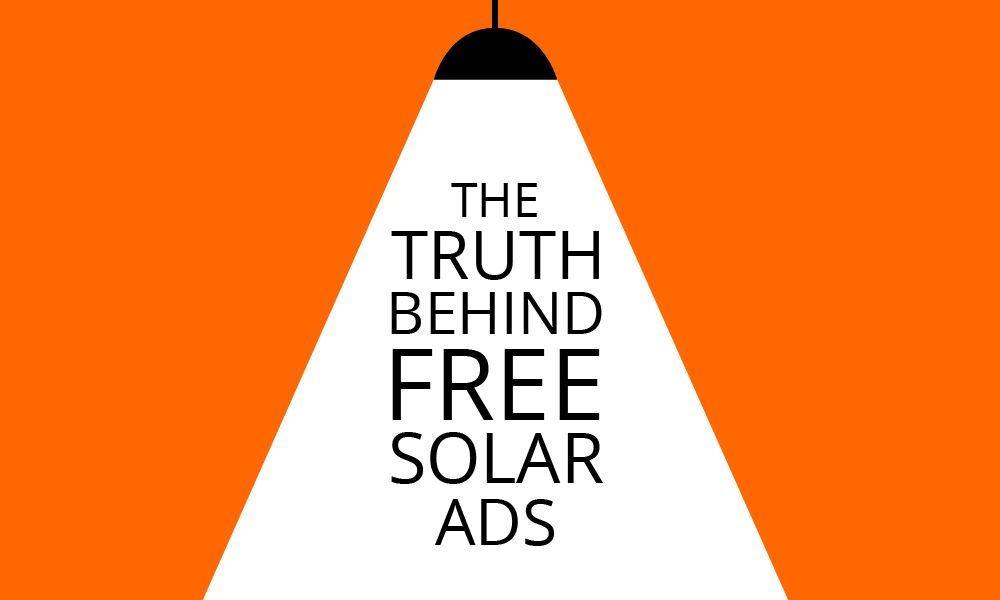If you’ve done any browsing online, you’ve probably seen ads for solar. And while solar energy is a remarkable solution for individuals looking to save on electricity bills while contributing to a cleaner environment, like in any rapidly growing industry, the solar sector is not immune to misleading advertising.
Some of the common misleading claims you might have come across are ads offering “Free Solar Panels” with the implication that the government will cover the cost of your solar system. Oftentimes, the ads attempt to convince people to share their contact information, which is then sold to a solar company. It’s better to reach out to one or more local dealers directly, but here’s a breakdown of the reality behind these claims and why they might not be as they appear:
1. The “Free” Misnomer:
Many ads claim to offer free solar panels, but the reality is often different. The term “free” usually refers to solar leasing or Power Purchase Agreements (PPAs), where you can have solar panels installed on your property at no upfront cost. However, with a PPA, you’ll be paying for the solar energy you use over a contractual period, which usually spans 20 to 25 years. With a lease, you will have no upfront costs for installation but will make monthly payments for your system that should be less than your average current electric bill.
2. Government Incentives:
While it’s true that there are government incentives to promote solar energy adoption, they don’t cover the full cost of the system. The federal solar tax credit, for instance, can offset a portion of your solar installation costs against your tax liability, but it won’t cover the entire cost. Currently, in Riverside County and California, there are no incentive programs for solar except for low-income areas or those in fire zones, but there is a program known as the Self-Generation Incentive Program (SGIP) that rewards homeowners for adding battery storage to their home solar system. Created by the California Public Utilities Commission (CPUC), this program provides a one-time rebate of up to $200 per kWh of solar battery storage capacity. There is also a $500 rebate for residents of Rancho Mirage through their Energy Authority. In Arizona, there is a solar tax credit of 25%, up to a total of $1000. There is also an exemption for sales tax if your solar installer is registered with the Arizona Department of Revenue (ADOR).
3. Misleading Advertising:
Misleading ads prey on the lack of information and the appeal of saving money. They might display government logos or use official-sounding language to give the impression that their offer is government-backed, which is generally not the case.
4. What’s The Real Deal?
Investing in solar can indeed save you money in the long run. Through net metering, any excess electricity your solar panels produce can be sold back to the grid, reducing your overall electricity bills. Plus, the value of your property will likely increase with the installation of solar panels, although there’s a tax exemption for your solar system so that you won’t pay extra property taxes.
5. How to Protect Yourself:
- Research: Before considering any solar offer, do thorough research. Look for reviews and ratings of the solar company.
- Understand the Contract: Read through the contract terms and understand the length of the agreement, your obligations, and the total cost over the contract period.
- Seek Professional Advice: If unsure, seek advice from a solar consultant or a legal advisor to understand the implications of the contract you are entering.
Solar energy is a fantastic, sustainable choice, but it’s essential to approach it with a clear understanding and avoid falling for misleading advertising.
Looking for honest, clear-cut solar solutions? Contact us for a free consultation to discover how solar energy can be a viable and cost-effective solution for you!

